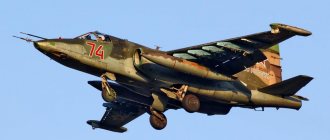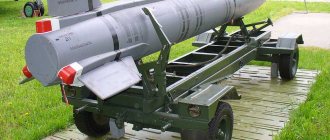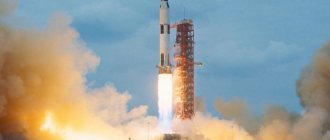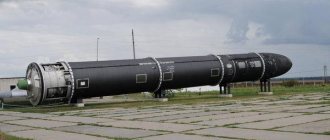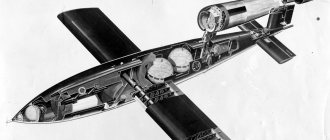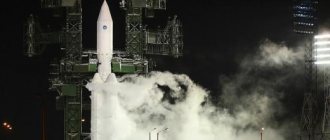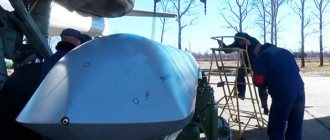When we talk about rockets, some people remember space travel, while others remember military operations. Moreover, the news, unfortunately, lacks mention of the latter. At the same time, many perceive missiles as modern high-tech weapons that appeared quite recently. At best, ordinary people will remember Wernher von Braun, who was actively working on rockets during World War II. He was a space fan, a follower of K. Tsiolkovsky and, allegedly, was not very happy to deal with weapons. There is even a historical claim that after the launch of the first rocket, he said that “it was beautiful, but it fell on the wrong planet.” However, rockets were launched decades before him. Even if they resembled modern ones only remotely, the fact remains a fact. This is not the newest type of weapon used in the modern world. And also, they simply abandoned it for 50 years, but later returned to it. But why?
The first rockets, of course, didn’t look like this, but they had existed for a long time.
When did the first rockets appear?
After reading the introduction, many may assume that rockets appeared, if not in the forties of the last century, then 10 years earlier. Or maybe 20? Or maybe 40 or 50? Absolutely not! The first use of what can be called rockets was back in 1827, that is, almost 200 years ago .
This happened during the war in the Caucasus , which did not cut into history as much as the world wars, the war with Napoleon, the Crimean War, the Hundred Years' War and other conflicts of varying degrees of intensity.
The Caucasian war was already bloody, and missiles were also used there.
Although, if you dig a little deeper into the manuscripts and historical documents, you can find out that this was not the first rocket launch. Something similar was used in China. Representatives of the Celestial Empire used flying bombs , which were made from paper or bamboo stalks long before such weapons began to be widely used in military affairs.
What is the difference between cruise and ballistic missiles and what other types are they?
rocket plane
X-15
Aircraft Rocket engines can also be used in aviation. Rocket planes can reach much higher speeds than similarly sized planes, but only over short distances. And because they don't require atmospheric oxygen, they are ideal for flying at high altitudes.
Rocket planes were first developed by the Germans during the First World War. However, these initial designs had some serious performance problems, which were later corrected by British engineers in the 1950s when they developed their highly efficient turbojet designs. They can provide shorter takeoffs and much higher acceleration.
Due to the intensive use of rocket engines, rocket engines are mainly used in interceptor aircraft and space planes. The X-15 is one of the most popular rocket aircraft. It was a rocket-shaped aircraft with a distinctive wedge-shaped vertical tail and short wings, built by the North American Air Force. During its operational phase, it set an altitude and speed record of 354,200 feet and 4,520 miles per hour.
Where were the first missiles used?
The rockets of the time were not used for destruction per se, but rather for signaling and defense against a mounted army. The explosions were not strong and could not cause serious harm to people and horses, but the animals were frightened by bright flashes, and this greatly hampered the advance. Such rockets were also used for entertainment, being the first ancestors of fireworks.
In fact, fireworks are also rockets.
All this happened back in the fifteenth century, and in the seventeenth century in Russia they began to massively develop and adopt similar technologies. There is even evidence that in 1607 a document was written called “ Charter of military, cannon and other matters relating to military science .” The first establishment that was engaged in the production and development of new types of gunpowder and missile systems itself appeared in Russia in 1680.
Peter I and the creation of rockets
There is even information that Peter I was trained . It is reported that he studied samples of foreign missiles and offered his vision of this type of weapon. It is even alleged that he took part in the creation of some missiles that were in service with the Russian army for more than a hundred years. However, as mentioned above, in those days the missiles were not good enough to be used in combat. But they were used regularly for entertainment, although they were very expensive.
The fastest plane in the world and its competitors. At what speed do they fly?
The real breakthrough in the use of missiles and their transition from being used for signaling and entertainment purposes came when the British got down to business. The starting point can be considered 1799 . It was then, in the battle for the Indian city of Seringapatam, that representatives of the crown realized that this could be a serious weapon. India already had missiles with metal and wooden casings, which carried about 5 kilograms of explosives.
The siege of Seringapatam will go down in history at least thanks to the appearance of missiles.
Who made the first combat rocket
Despite winning that battle, the British decided that they urgently needed to come up with an answer and it only took them a few years to do so. Already in 1805, William Congreve began mass production of rockets. The largest of them were 32 pounds, and they flew up to 3 kilometers. Now this seems insignificant, but at that time about three hundred of these missiles made it possible to burn Copenhagen during the shelling in a couple of days.
The history of rockets has developed rapidly. If after the battle in India only the British saw the potential of missiles as a new type of weapon, then after the shelling of Copenhagen the whole world, including Russia, realized this. In 1811, samples of English rockets were brought to the country and M.I. Kartmazov to figure out how they work and how something similar can be done. Over the course of several years, it was possible to create missiles with a flight range of up to 2.5 kilometers , but they never entered service.
This is how they painted M.I. Kartmazov, the progenitor of Russian rocket science.
rocket pack
The rocket pack concept has been around for almost a century, but it didn't become popular until the 1960s. It is a low-power propulsion system that transports people from one place to another over short distances.
Rocket packs typically use hydrogen peroxide as fuel to propel a person through the air. However, rocket technology has not advanced much since the 1950s. The overall mass coefficient appears to be the main culprit, limiting the flight time to seconds.
Although lightweight oxygen and steam engines can provide a decent amount of thrust, the rocket produces a relatively low exhaust velocity and therefore a weak specific impulse. Existing jetpacks can only fly for about 30 seconds, with a top speed of about 120 km/h.
Jetpacks can also be built with turbojet engines running on kerosene jet fuel. They can reach higher altitudes and have longer flights lasting several minutes, but they are difficult to build and too expensive. So far, only one working prototype has been produced, which was flight tested in the 1960s.
Zasyadko rockets
of General A.D. turned out to be much more interesting. Zasyadko , who even sold his own estate in order to privately engage in development. In the end, it was his missiles that turned out to be the most interesting. They had a caliber of 2 to 4 inches, a side stabilizer, and could travel up to 2.7 kilometers . In addition, Alexander Dmitrievich developed a launcher for 6 missiles, which significantly increased the rate of fire.
The creator of the rocket launcher and his creation.
Despite the fact that A.D. Zasyad created excellent rockets and did a good demonstration, this did not help him quickly start selling his products. It was not until 1827 that he was able to begin production and launch the first 3,000 rockets . They were used in the war in the Caucasus, which I spoke about at the beginning. This also forced the army command to create a separate type of troops, since the specifics of working with new weapons were very different from working with small arms. This is not only the ability to use launchers, but also a completely new combat tactic.
The history of the most famous airplane in the world and why Concorde no longer flies.
Returned from Kolyma
Korolev vs. Musk: secret projects of the USSR propose to be digitized
Creating twins of Soviet rockets, ships and satellites will help get ahead in the space race
In 1933, Korolev was appointed deputy director of the Jet Research Institute. Missile systems for the Red Army were created there, supervised by “Red Marshal” Mikhail Tukhachevsky. Korolev spent part of the allocated funds on unplanned experiments that did not produce results. This, according to the canons of that time, was regarded as sabotage, as political sabotage.
In the summer of 1938, the 31-year-old designer was arrested. The journey through torment began: Butyrka prison, then a gold mine in Kolyma, general work. Only in 1940 Korolev was transferred to a special NKVD prison, “sharashka” TsKB-29. There, major scientists under the leadership of aircraft designer Andrei Tupolev (also arrested) worked for the defense industry. All of them were legally imprisoned, but in tolerable conditions.
Photo: wikipedia.org
The first photo after the arrest. Butyrka prison. 1938
In 1943, Korolev became the chief designer of rocket launchers at the Kazan Sharashka. He was released only in 1944, and a year later he was already leading the development of the first Soviet ballistic missile R-1. The Americans managed to capture the rocket scientist Wernher von Braun, who created the “weapon of retribution” for Hitler. It was he who became, in fact, the creator of the American missile program. Korolev had to work on his own; as trophies of the USSR, only a few German developments on Vau shells were received. But already in the early 1950s, Korolev was half a step ahead of the Americans.
Where billionaires are flying: what will 2022 be remembered for in the space industry?
Non-professionals and Chinese often enter orbit
Where many missiles were used for the first time
Naturally, the use of missiles did not end there, but only began. One of the Russian-Turkish wars, which took place from 1828 to 1829, . In just one year of battles, the artillery of the Russian Empire fired more than 10,000 missiles at the enemy. Then they learned to launch them not only from the ground. The launchers were mounted on ships and ferries. The author of such an innovation is General K.A. Schilder.
The first missile samples required significant modifications. They were not very accurate, inferior even to cannons, often exploded upon launch, had heavy launchers and weighed quite a lot. All this prevented them from spreading, but the work was carried out and the same General K.A. was doing it. Schilder. But his greatest and most serious achievement was the installation of missile weapons on submarines, the history of which I talked about in a separate article. It’s just that the technology was rather weak to implement his ideas, but they had prospects.
General K.A. Schilder proposed launching rockets not only from the ground, but also from ships and even submarines.
Thanks to improvements in missiles, by the mid-19th century it was possible to increase the range to 4 km and increase accuracy, and the rate of fire increased to 6 rounds per minute. This was an excellent result for that time. As a result, from 1845 to 1850, almost 50,000 units of this type of weapon were collected. At the same time, the production consisted of only 30 workers.
Naturally, in order to achieve something significant, it was necessary to produce much more, because other countries also did not stand still and worked on their own firing systems. In particular, work was in full swing on guns with a rifled barrel, which would provide greater range and accuracy. At this stage the work was carried out by K.I. Konstantinov.
The largest submarine and the history of the creation of submarines.
Specifications
The first and second stages of the launch vehicle are equipped with liquid rocket engines RD-107A and RD-108A from NPO Energomash named after Academician Glushko, and the third stage is equipped with a four-chamber RD-0110 from the Khimavtomatika Design Bureau. Rocket fuel is liquid oxygen, which is an environmentally friendly oxidizing agent, as well as slightly toxic fuel - kerosene. The length of the rocket is 46.3 meters, the weight at launch is 311.7 tons, and without the warhead - 303.2 tons. The mass of the launch vehicle structure is 24.4 tons. The fuel components weigh 278.8 tons. Flight tests of Soyuz-2.1A began in 2004 at the Plesetsk cosmodrome, and they were successful. In 2006, the launch vehicle made its first commercial flight - it launched the European meteorological spacecraft Metop into orbit.
It must be said that rockets have different payload launch capabilities. There are light, medium and heavy carriers. The Rokot launch vehicle, for example, launches spacecraft into low-Earth orbits - up to two hundred kilometers, and therefore can carry a load of 1.95 tons. But the Proton is a heavy class, it can launch 22.4 tons into a low orbit, 6.15 tons into a geostationary orbit, and 3.3 tons into a geostationary orbit. The launch vehicle we are considering is intended for all sites used by Roscosmos: Kuru, Baikonur, Plesetsk, Vostochny, and works within the framework of joint Russian-European projects.
Using science to create rockets
His approach was very different from what past inventors had demonstrated. If M.I. Kartmazov, A.D. Zasyadko and K.A. Schilder worked after the fact, learning from their mistakes and simply correcting what did not perform well in tests, K.I. Konstantinov applied precisely the scientific approach .
K.I. Konstantinov proposed similar launchers. They significantly facilitated deployment, speeded up shooting and increased its accuracy.
He worked a lot with physics, chemistry, ballistics and other sciences before making a prototype. As a result, many different missiles appeared with a caliber from 2 to 4 inches and with a firing range from 1.3 to 4 kilometers. They could be launched from portable tripods or from wheeled installations. Rockets could even be launched from indoors , which was a great innovation at that time. All this was well demonstrated during the Crimean War.
However, even though Konstantinov’s missiles were good, they were still slightly inferior to the French, primarily in range. But having received samples of enemy missiles, the engineer was quickly able to modify his samples and make them no worse than enemy missiles.
Unlike other researchers and inventors K.I. Konstantinov relied mainly on scientific data rather than trial and error.
How does a nuclear power plant work? Are nuclear power plants dangerous?
Accuracy of the first missiles
The main advantage of K.I. missiles Konstantinov was their high accuracy. During testing, it was found that the deviation from the target was only 21 meters when firing from a distance of two kilometers. For comparison, the same figure for American Gel missiles was 171 meters . The French guns were also quite accurate, but there is no data left on them.
By 1854, the number of workers who took part in assembling rockets also increased. Their number reached 120 people and per year they produced about 20,000 missiles , which were in service in different parts of the Russian Empire. In particular, there were many of them in St. Petersburg to protect against a potential attack by the English fleet.
Now rockets are a work of art. But in essence they differ little from what it was 200 years ago. If you are interested, you can read more about modern missiles here.
Why were rockets not used before World War II?
Despite some success, the advent of rifled artillery significantly reduced the effectiveness of rather expensive and difficult-to-use missiles. As a result, they remained in service until approximately the end of the 19th century. But even after this, Konstantinov’s developments were used to create everything related to ballistics, and even jet missiles, which began to appear in the mid-20th century.
Join us on Telegram!
So the history of missiles was divided into two parts , and that is why many simply do not know that similar weapons existed several centuries ago. We are used to the fact that a rocket is something high-tech with a bunch of light bulbs in a shiny casing, but in reality it is just a flying bomb . By the way, if you are interested, in a long article about rockets I talked in detail about how they work, why they fly, how they accelerate to 20,000 kilometers per hour, and how intercontinental rockets differ from ballistic ones.
Tamed Gravity
“The most reliable mechanism is a mechanism that is missing” - these words are attributed to Vladimir Barmin, the chief designer of launch facilities.
And according to this aphorism, the R-7 family of missiles is close to absolute reliability, because many actions are performed not by special mechanisms, but by tamed gravity. The start of the “sevens” was implemented simply and reliably to the point of genius. When launching side blocks, thrust dispersion is inevitable. In this case, large disturbing moments may arise, and the “late” block could, in the worst case, fall out of the package. It was impossible to synchronize engine starting using the means of the 50s. But they managed to get around this problem beautifully - at launch, the side blocks reached an intermediate thrust stage, less than the mass of the rocket. The disturbing moments were countered by the trusses of the starting structure. If everything was in order, the engine of the central unit started. The total thrust of the engines exceeded the weight of the rocket, and it began to rise. When the rocket rose 49 millimeters, the launch support brackets came out of their mounts, and the rocket found itself in free flight. And the side blocks transitioned from the intermediate stage to full thrust more easily and reliably, which made it possible to do this already in flight.
The rocket has risen slightly, the supports are already beginning to extend, a still frame from the video was taken by the USSR KIK
Launch animation from ESA video
And the power supports and cable masts are retracted under the influence of gravity - they are supported by large and heavy counterweights.
Counterweights - yellow cylinders, photo by Roscosmos
The separation of the side blocks is also done simply to the point of genius. Before separation, the engines of the side blocks are switched to reduced thrust, and the steering engines are turned off. Then the lower force connections in the tail of the rocket are broken.
Lower power connections, photo by KIK USSR
The engines of the side blocks are specially located at an angle to the axis of the block.
Block axis and direction of engine thrust, USSR KIK diagram
Therefore, after the force connections are broken, the blocks begin to rotate.
Photo by KIK USSR
Then the side block motors are turned off. The engine of the central block (second stage) continues to work, and the side blocks simply fall out of their mounts under their own weight. Immediately after the mechanical connection breaks, the oxygen tank drain valve opens and the side blocks begin to twist.
Drain valve under the red safety cap in the center, photo by KIK USSR
Only in the 21st century were on-board cameras installed on the Soyuz, and we were able to see up close how beautiful it is.
Animation based on ESA video
I recommend looking at the unique footage of regular and emergency divisions on the USSR Command Commission website.
